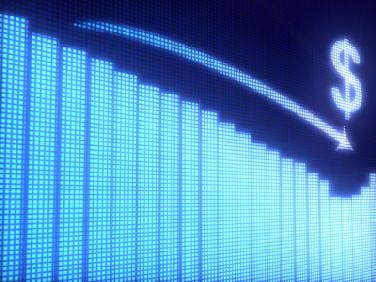Recent Articles
Popular Makes
Body Types
What is Depreciation?

What is depreciation? Car depreciation can be approached in quite a few ways. A simple definition of car depreciation is the decline in value of assets. In other words, when you buy something, it becomes less valuable as you use it. You can also look at depreciation as the value of an asset over its useful life. This would be the gradual and permanent decrease in the economic value of the asset. This decrease in the economic value could be due to the physical depreciation (i.e. age and/or wear and tear), changes in demand, and/or obsolescence. For example, take a new office copier that costs $3,000. Due to depreciation, after five years it may only have a residual value (fair market value or salvage value) of $500. In other words, if the depreciation rate is constant, then the copier will depreciate in value $500 each year.
Car Depreciation is Like Asset Depreciation
Understanding depreciation is obviously very important for business applications. But knowing what depreciation is can be just as important towards practical applications, for example car depreciation. So, what is car depreciation? It applies to all of the previously listed definitions by simply substituting 'car' for 'asset'. However, understanding what is car depreciation and how it can be calculated can be a bit more complicated, but definitely not overwhelming.
The previous example of depreciation, with the office copier, is the simplest method of calculating depreciation. It is called the Straight-line Depreciation Method. The Straight-line Depreciation Method is calculated using a constant rate of depreciation. To calculate the annual depreciation rate using the Straight-line Method subtract the original cost of the asset by its residual value (fair market value or salvage value), then take that result and divide it by the number of useful years. Once again, let's refer to the office copier example to calculate an example. The copier cost $3,000 brand new and its residual value after five years was $500. First you subtract $500 from $3,000 to get the result of $2,500. Then, you divide $2,500 by the five years of useful life and the final result is $500- the annual depreciation rate of the office copier. It is also important to understand, that if you already know the annual depreciation rate and residual value of an asset, then you can approximately predict or estimate the fair market value of a new asset year by year.
Calculating car depreciation is definitely not as simple as the office copier example. Another method of calculating depreciation, called the Declining Balance Method or the Reducing Balance Method, can be used to calculate car depreciation. The Declining Balance Method uses a higher depreciation rate in the first year of an asset's life and a lower or gradually decreasing rate in subsequent years. But what is the depreciation rate for automobiles? The car depreciation rate is around 15-20% each year. However, new cars depreciate a lot more in their first year of life than in subsequent years. In fact, a new car can depreciate as much as 35% in its first year. Take, for example, a new vehicle that retails for $25,000, has a first year car depreciation rate of 30%, and has a steady 15% depreciation rate in the subsequent four years (five years total). After the first year, the car will depreciate $7,500 (25,000 x .30 = 7,500) and have a value of $17,500. After the second year, the car will depreciate $2,625 (17,500 x .15 = 2,625) and have a value of $14,875. After the third year, the car will depreciate $2,228.55 (14,875 x .15 = 2,228.55) and have a value of $12,646.45. After the fourth year, the car will depreciate $1,896.97 ($12646.45 x .15 = 1,896.97) and have a value of $10,749.48. And finally, after the fifth year, the car will depreciate $1,612.42 (10,749.48 x .15 = 1,612.42) and have a value of $9,137.06. So, after five years of useful life the car depreciation totals $15,863, which is just over 63%. That is a lot of money lost in five years, and that does not include maintenance and repairs, loan interest, auto insurance, or any other possible car related expenses.
Understanding what is depreciation, and being able to calculate it, can be a very important skill that will help you make many of your purchasing decisions. It can be especially helpful when purchasing a new vehicle. With proper research, you can find which auto makes and models have the least annual car depreciation rates. And, since new cars depreciate the most after the first year, researching which vehicles have the lowest car depreciation rates during that period will help you make a very well-educated decision.